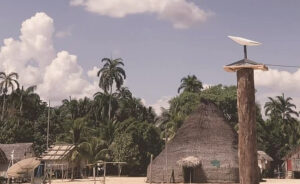Scientists have pinpointed an exciting evolutionary mutation in South America. Amazonian populations have developed a genetic resistance to Chagas, a leading cause of death in the region. Triatomine “kissing” bugs, so-called because they often feed around the mouths of sleeping humans, spread the Trypanosome cruzi parasite through their feces.
Chagas disease affects six million people across Latin America and accounts for 12,000 deaths per year. When first infected, people may show no symptoms, or mild symptoms like headaches, vomiting, and fever. Unfortunately, these symptoms are common with many other illnesses, and Chagas can remain undiagnosed.
As it develops, Chagas can be a vicious disease. It can cause enlargement of the liver, swollen glands, digestive issues, altered heart rate, and even heart failure. Scientists hope that this latest study will help the development of new treatments.
Three key genes
Yet despite an abundance of kissing bugs in rural areas, Chagas rarely affects native Amazonians. Population geneticist Tabita Hunemeier was intrigued. Her previous research discovered three genes in Andes mountain populations that allow them to comfortably live at high altitudes. She wondered if resistance to Chagas was a similar adaptation.
Researchers studied the genomic data of 118 individuals from 19 populations across the Amazon. They compared these with the genomes of individuals from closely related Central American groups and distantly related East Asian populations.
They found three genes that could have caused this genetic evolution. PP3CA and DYNC1I1 impact the body’s immune response to the Chagas parasite and NOS1AP affects our reactions to mosquito bites. Most people in the Amazon have a variant of the PP3CA gene, and laboratory testing has proved that this gene variant reduced susceptibility to Chagas. While this is a breakthrough, scientists are not sure exactly how the gene reduces susceptibility.

Image: D. An Pham/Science
Almost no geographic overlap
To collect more evidence about the role of the gene variant, the team layered a map of the regions where Chagas is common with a map of people with the PPP3CA variant. There was almost no overlap.
“At first, I didn’t believe it because it’s so perfect,” Hunemeier said.
Once they found the variant, researchers wanted to find out when this population developed it.
“We focused on finding evidence of positive natural selection related to tropical diseases in the Americas,” Hunemeier explained.
Previous studies of 9,000-year-old samples from northern Chile and southern Peru show the earliest signs of Chagas disease. Natural selection isn’t speedy, but the team believes the process for Chagas disease resistance started 7,500 years ago. Subsequent epidemics will have positively selected individuals with the greatest resistance and likely would have eventually led to resistance across the population.






